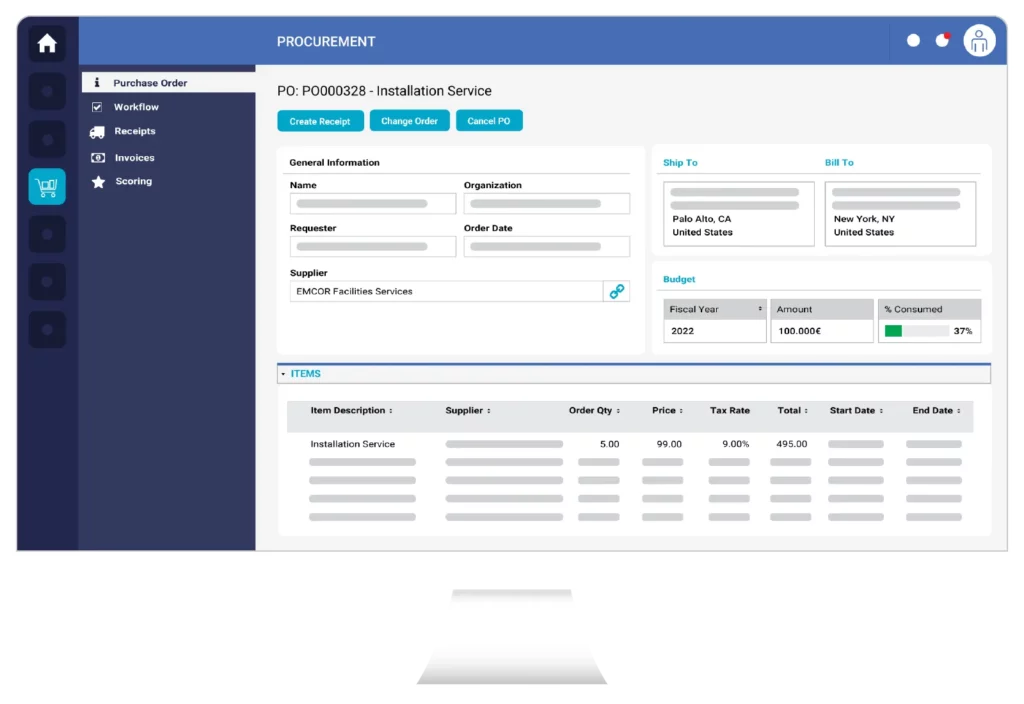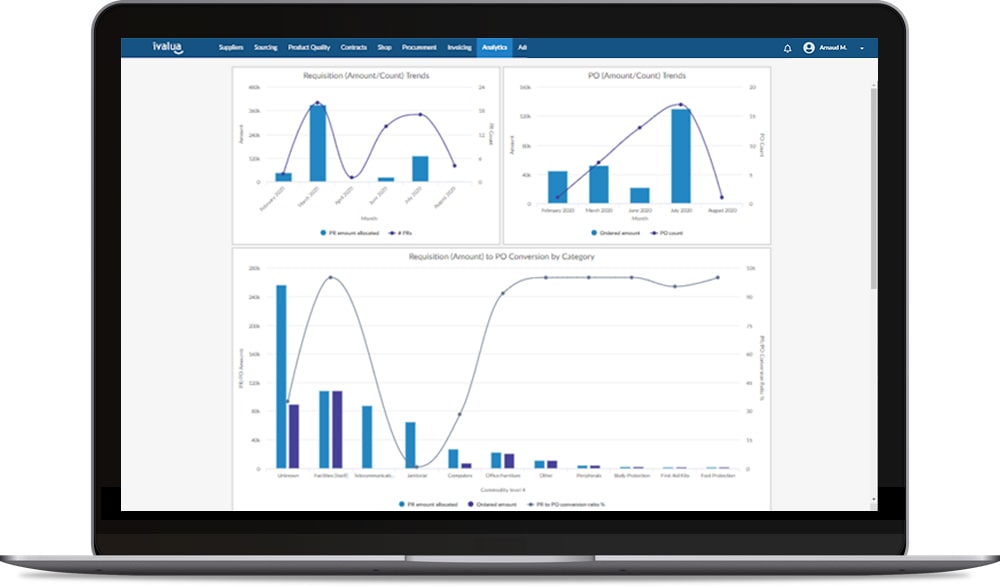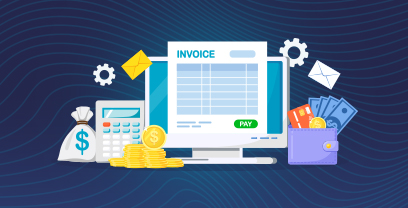When does a purchase actually begin? For enterprise teams, it starts long before a vendor is selected or a PO is sent. A critical but often overlooked step in managing spend, enforcing policy, and gaining visibility across the procurement process, creating a purchase requisition is the first step in the process.
Purchase requisitions are a foundational element of mature, well-governed procurement operations, and at Ivalua, we’ve helped global organizations turn this early-stage process into a powerful way to increase efficiency and improve compliance.
In this blog, we’ll explain what a purchase requisition is, how it differs from a purchase order, why it matters for enterprise teams, and how automation can help you unlock its full potential.
Key Takeaways
- Purchase requisitions are essential for helping organizations align spend with budgets, policies, and strategic goals.
- Manual requisition workflows can lead to delays, unapproved spend, and poor visibility. Automation can eliminate these issues and improve compliance.
- Platforms like Ivalua streamline the entire requisition process, from intake to PO, enabling faster approvals, better forecasting, and full procurement transparency.
| Discover how automated requisitions can improve control and cut costs. Find Out More |
What Is a Purchase Requisition?
A purchase requisition is an internal document used by employees to formally request the purchase of goods or services. It’s an essential part of the procurement process, helping organizations manage demand before any external transaction occurs.
Unlike a purchase order (PO), which is sent externally to a supplier – often using purchase order automation software – to initiate a transaction, a purchase requisition is used solely within the organization to gain approval for a potential purchase. It typically includes important details like the item description, quantity, estimated cost, and justification for the request.
Once submitted, it routes through an approval workflow to ensure the request aligns with budget, policy, and business needs before any actual purchase is made.
This is a key distinction in the broader conversation around procurement vs. purchasing. While purchasing refers to the act of buying, procurement encompasses the full strategy, policy, and process behind those decisions, starting with requisitions.
Why Purchase Requisitions Matter for Enterprise Teams
In mature organizations, the purchase requisition process is a foundational step in enforcing purchase order management control and ensuring disciplined, policy-aligned procurement. By capturing demand through a structured intake process, teams gain early visibility into upcoming purchases, so they can make sure those purchases align with budgets, vendor strategies, and compliance requirements.
This front-end governance helps organizations prevent maverick spend, and ensure that sourcing decisions contribute to broader financial and operational goals.
Requisitions also play a central role in enabling spend analytics and budget control. Teams can compare requests against planned spend in real time and flag exceptions early. When integrated with intelligent intake management solutions, purchase requisitions streamline the user experience and ensure there are guardrails for policy, compliance, and approval workflows.
Purchase Requisition vs. Purchase Order
Confusion between purchase requisitions and purchase orders is common, even in well-established procurement teams. But the distinction matters. Each serves a different purpose in the procure-to-pay process and plays a unique role in maintaining control and accountability.
For organizations focused on building a streamlined, compliant Invoice-to-Pay process that covers the entire lifecycle of an invoice from purchase requisition to fulfillment and payment, understanding where these documents fit is essential.
The table below illustrates why both documents are critical.
| Purchase Requisition | Purchase Order | |
| Who creates it? | Initiated by employees, department leads, or project owners to request a potential purchase | Created by the procurement or purchasing team following approval of a requisition as the first step in the purchase order process |
| When does it happen in the process? | Occurs at the beginning of the procurement process, before supplier selection or commitment | Takes place after requisition approval, during the formal purchasing phase |
| Is it internal or external? | Strictly internal and used within the organization for planning, approval, and compliance | External and shared with the supplier to confirm and authorize the transaction |
| Is it a request or a formal contract? | A preliminary request indicating intent to purchase; not legally binding | A formal, legally binding contract that confirms the purchase with defined terms |
| What happens after it’s approved? | Routes to procurement for PO creation, vendor engagement, and eventual order issuance | Sent to the supplier to initiate order fulfillment, shipping, and eventual invoicing |
Now that we understand the difference between purchase requisitions vs. purchase orders, let’s walk through the purchase requisition process, step-by-step.
The Purchase Requisition Process: 5 Key Steps
A well-defined purchase requisition process helps organizations manage spend proactively, reduce risk, and streamline procurement operations. By putting in place structure and visibility before a purchase is made, you can make sure your buying decisions align with budgets, policies, and strategic priorities.
Let’s walk through the five main purchase requisition steps:
Step 1: Identify the Need and Create the Requisition
The process begins when a department or team identifies a need for a product or service. An employee creates a purchase requisition in the system, detailing the item, quantity, purpose, and any supporting notes. This step captures demand early and gives procurement teams visibility into upcoming spend.
Step 2: Route for Approvals Based on Policy
Once submitted, the requisition is routed for approval based on the organization’s rules and policies. Approval paths can be configured by category, dollar amount, budget owner, geography, or risk level.
Procurement automation tools help streamline this step by automatically applying the correct workflow. This helps to eliminate delays and enforce purchase requisition compliance.
Step 3: Budget Check and Validation
Before proceeding, the system verifies whether the request fits within the available budget.
If funds are insufficient or misaligned, the requisition may be flagged for adjustment. It may also be rerouted or escalated for financial review – an important step toward avoiding overspend.
Step 4: Requisition Converts to PO
Once the requisition is approved and validated, it’s converted into a formal purchase order. At this stage, the buying decision becomes official.
Procurement then sends the PO to the selected supplier with final pricing, delivery terms, and other details.
Step 5: Supplier Receives PO and Fulfills Order
Because the request originated from a centralized, traceable system, the entire transaction up through invoicing and payment is fully visible, auditable, and integrated within the e-invoicing software. This end-to-end transparency strengthens purchase requisition control and simplifies reconciliation.
While these steps help guide the process, there may still be challenges. Let’s examine the most common ones and how to address them.

Common Issues with Manual Purchase Requisition Workflows
Purchasing automation can help solve some of the most common challenges of processing purchase requisitions. Before we discuss solutions, let’s take a look at what could go wrong.
Delayed Approvals and Bottlenecks
Approvals often get stuck in email threads or manual workflows, causing unnecessary delays. Without a centralized system, there’s no audit trail or accountability for who’s holding up the process.
Budget Overruns and Unapproved Spend
When requests bypass formal review, purchases can exceed budgets or violate policy. This lack of upfront control leads to reactive corrections and financial risk.
Inconsistent Documentation
Requisition formats vary across teams, with missing or incomplete information common. Without a standard process, purchase requisition tracking and validation become error-prone.
Poor Visibility Across Teams and Locations
Disparate systems and siloed workflows make it hard to see who’s buying what, when, or why. This lack of transparency undermines procurement oversight and strategic planning.
Automating the Purchase Requisition Process: Benefits & Solutions
The challenges of manual requisitioning – delays, budget overruns, and lack of visibility – can be significantly reduced through automation. By digitizing and standardizing the purchase requisition process, organizations gain better control, transparency, and agility from the moment a need is identified.
With purchase requisition software solutions like those offered by Ivalua, you can enforce purchase requisition policy, streamline approvals, and strengthen collaboration without adding friction to the process.
Embedded Compliance and Policy Enforcement
Automated requisition workflows ensure every request follows the right path – no shortcuts or skipped approvals. Using intake management software, you can configure routing rules, budget thresholds, and required fields to improve purchase requisition management and enforce compliance from the start.
Increased Spend Visibility and Forecasting Accuracy
Spend analysis software gives finance and procurement teams real-time visibility into every requisition—what’s being requested and why—by centralizing data in one system. This transparency enables more accurate analysis, stronger forecasting, and tighter budget control.
Faster, More Auditable Approvals
Automated systems eliminate guesswork around who needs to approve what and when. Each step is time-stamped and logged, enabling escalations when needed and supporting audit-ready workflows without additional overhead.
Improved Supplier Coordination
Supplier management software ensures that only fully approved requisitions are converted into purchase orders, minimizing confusion and rework. By streamlining vendor interactions and maintaining accurate supplier data, it enables smoother order fulfillment and reduces the risk of disputes.

UPL’s success story: Migrating the PR/PO Back-Office Work to a Global Shared Services Unit
UPL, a global agricultural solutions provider with over 10,000 employees and 1.2 million requisitions annually, faced challenges from fragmented spend and margin pressure. To address this, they implemented Ivalua’s unified procurement platform. Leveraging newly attained levels of data transparency, they streamlined their network of more than 100k suppliers, optimizing margins and driving more strategic, effective spending.
The biggest benefit is having a single source of truth in one centralized platform. With strategic sourcing and transactional procurement on one platform globally, we benefitted from scale and efficiency
– Sylesh Gopan, Global ERP Head, UPL
The Value of a Strong Purchase Requisition Process
A strong purchase requisition system creates a solid foundation for effective budget control and policy compliance. By automating this critical step, you can eliminate common pitfalls, such as approval delays, maverick spend and inconsistent documentation.
Leading procurement organizations are achieving greater accuracy, accountability, and efficiency with Ivalua by streamlining purchase requisitions and ensuring policy is followed from the beginning of the procurement process. With Ivalua, you have full purchase requisition visibility, fewer surprises and a smoother procurement process from start to finish.
| See how streamlined purchase requisitions can improve control and cut costs.Watch Demo / Find Out More |
FAQs
What’s the purpose of a purchase requisition form?
A purchase requisition form is used to formally request the purchase of goods or services within an organization. It ensures that spending is reviewed and approved before any financial commitments are made.
How is a requisition approved in an automated system?
In an automated system, requisitions are routed through predefined workflows based on factors like amount, category, or department. Approvers are notified automatically, and each decision is logged for transparency and auditability.
Who usually creates purchase requisitions in large companies?
Employees, department leads, or project owners typically create requisitions when a need arises. These users initiate the process to purchase requisition request items or services aligned with their team’s goals or responsibilities.
How does a requisition become a purchase order?
Once a requisition is reviewed and approved, it’s converted into a purchase order by the procurement team or system. The PO is then sent to the supplier to authorize fulfillment and begin the transaction.
Can purchase requisitions integrate with budgeting and planning tools?
Yes, modern requisition systems can connect directly with budgeting and planning tools. This allows real-time budget checks and ensures that spend aligns with financial goals before approval.
Further Reading
Procurement vs Purchasing: Key Differences, Workflows, and Enterprise Risks
Purchase Orders Explained: Types, Process, & Technology
Purchase-to-Pay (P2P): Definition, Process, Benefits & Insights




